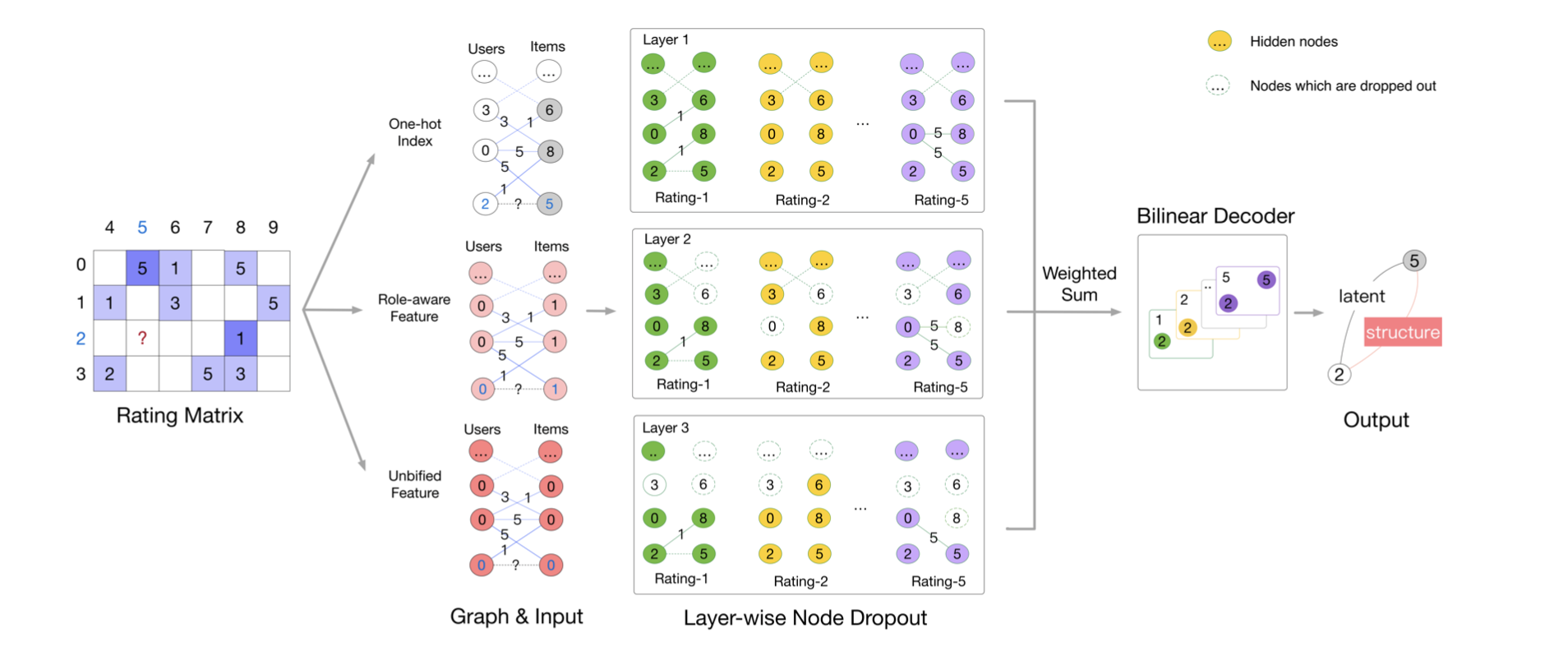Inductive Matrix Completion Using Graph Autoencoder
Recently, the graph neural network (GNN) has shown great power in matrix completion by formulating a rating matrix as a bipartite graph and then predicting the link between the corresponding user and item nodes. The majority of GNN-based matrix completion methods are based on Graph Autoencoder (GAE), which considers the one-hot index as input, maps a user (or item) index to a learnable embedding, applies a GNN to learn the node-specific representations based on these learnable embeddings and finally aggregates the representations of the target users and its corresponding item nodes to predict missing links. However, without node content (i.e., side information) for training, the user (or item) specific representation can not be learned in the inductive setting, that is, a model trained on one group of users (or items) cannot adapt to new users (or items). To this end, we propose an inductive matrix completion method using GAE (IMC-GAE), which utilizes the GAE to learn both the user-specific (or item-specific) representation for personalized recommendation and local graph patterns for inductive matrix completion. Specifically, we design two informative node features and employ a layer-wise node dropout scheme in GAE to learn local graph patterns which can be generalized to unseen data. The main contribution of our paper is the capability to efficiently learn local graph patterns in GAE, with good scalability and superior expressiveness compared to previous GNN-based matrix completion methods. Furthermore, extensive experiments demonstrate that our model achieves state-of-the-art performance on several matrix completion benchmarks. Our official code is publicly available.
PDF Abstract




 MovieLens
MovieLens
